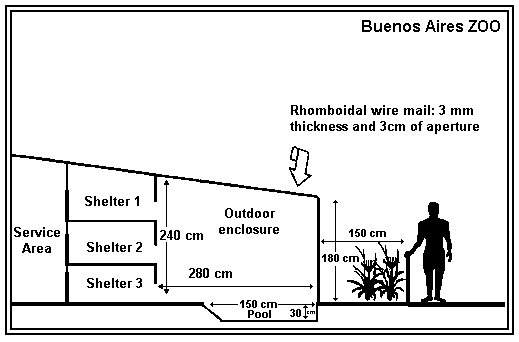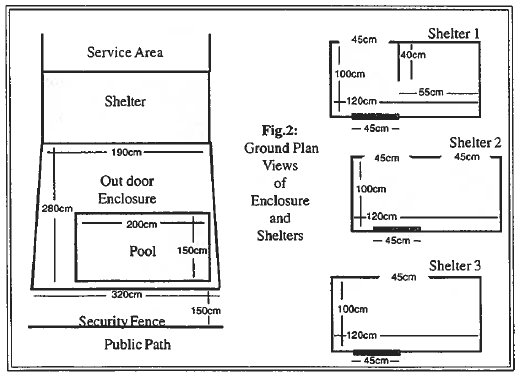 |
Last Update:
Thursday November 22, 2018
|
| [Home] |
Previous reports on captive breeding of this species were published by CUBAS et al. (1993) and BLACHER (1994). The later author reports three offsprings for the same female in a period of eleven months in the Curitiba Zoological Park, Brazil. In that case delayed implantation had apparently not occurred, as it was presumed by several authors (DAVIS, 1978). In Argentina there is few information avalaible on this species kept in captivity. The more extensive report was from ROSENZVAIG (1976), but the author has not included reproductive aspects. We have no knowledge on breeding in captivity apart from BLACHERS (1994) report from Brazil. Recently a female dropes a litter of two cubs in the Buenos Aires Zoo. The group of L. longicaudis consisted originally of two females and a male but one female died during the period of observation. The animals were kept in a two sectors appartable enclosure. Each sector has a pool of 1.5 x 2 x 0.3 m and three shelters in different levels as shown in Figure 1. The animals were allowed to join each other only during daytime.
November 02, 1994: Starting of observation period. December 30, 1994: The male was removed with the intention to start with a strategy to keep the animals 30 days joined and 30 days seperated. In this period the diagnosis of a pregnancy should be feasible. January 01, 1995: Pregnancy became already externally evident. January 15, 1995: Two cubs were born in the superior burrow. One of the cubs died. Necropsy gave no result for the reason of death. February 28, 1995: The remaining male cub opened his eyes. March 08, 1995: The young animal first explored the area outside the burrow. The female transported him in the mouth, avoiding water in her crosseds (the level of the pool was lowered to two inches). March 30, 1995: The young first bathes in the pool. At least in this case delayed implantation has not occured. REFERENCES Blacher, C. (1994). Strategic reproduction of Lutra longicaudis. IUCN Otter Spec. Group. Bull., 9: 6. |
| [Copyright © 2006 - 2050 IUCN/SSC OSG] | [Home] | [Contact Us] |

